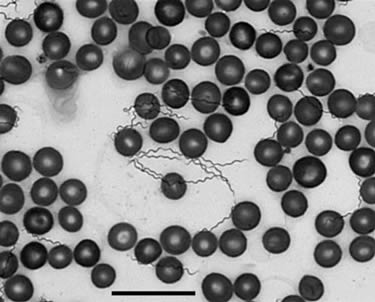Infectious Diseases Case of the Month |
||||||
A 62 y.o. white female was seen at Wenatchee Valley Clinic (Wenatchee, WA where W.M. used to work) for a several week history of episodic fevers, malaise, myalgias, and prostration. Episodes lasted several days with intervening periods of relative well being lasting approximately one week. She had had three such cycles of illness at the time of her evaluation. The patient had previously been in good health. Ten days prior to her first episode of illness she had spent several days at her family cabin on Lake Roosevelt. Lake Roosevelt, in north central Washington, is a reservoir formed by the damming of the Columbia River by Grand Coulee Dam. The patient had swam in the reservoir and gone for lengthy hikes about the property. She could recall no specific insect exposure. Laboratory evaluation was notable for thrombocytopenia (plts 53). WBC was 7.4, Hgb was 12 and liver function tests were normal. She was feeling well when seen in the office. Had she been seen during one of her episodic periods of illness, her peripheral blood smear might have appeared as the one at left. |
||||||
What bacterium is the most likely cause of her illness? Submit your answer below. |
||||||
|
Answer and commentary will follow your submission. |
|||||
